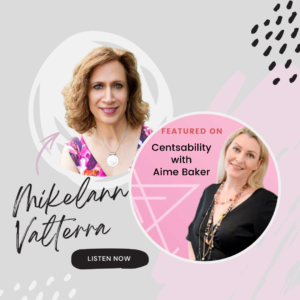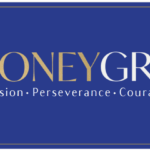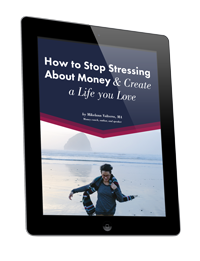 The kitchen ceiling
The kitchen ceiling
It was a dark and rainy night, and I was returning home from the dance studio where I had been happily dancing Tango. Money was definitely not on my mind. Rather, tango dresses occupied my thoughts. I walked in the door and my 12-year-old niece who lives with me, ran to me. “Auntie! There’s water coming out of the ceiling in the kitchen! Come!” My heart in my throat, I raced to the kitchen where sure enough, I could see water dripping slowly from three places. It was hitting the table and forming a pool on the floor.
I could feel my throat constrict, my vision narrow, and panic well up in my gut. I then ranted, both out loud and inside my head: “What am I going to do?! This will cost a fortune! There goes my travel plans when the pandemic ends! I just finished the remodel! Why oh why?!” My niece, less triggered in the moment, got a bucket out.
I stormed out of the kitchen and retreated to my bedroom, unable to temporarily control my emotions in the face of impending doom. The world was ending, the sky was falling, and the roof was caving in.
Signs of being triggered
I knew some of my core fears were being triggered. “Triggered” generally means you experience a surge of fear and anxiety, and bleak emotions descend and take hold of you. Underneath the panic lurks some of our core fears. We all get emotionally stirred up, but how do we know when we are financially triggered? For me, I know my core fears are provoked when:
- My thinking slows down and gets fuzzy. (My brain capacity seems to narrow down to the width of a straw…)
- I can’t really hear people around me (possibly giving me sound advice)
- I can hear myself catastrophizing
- I feel trapped and tell myself there are no options
- I go into black and white thinking
What about you? How do you know when you are deeply triggered? How do you react? Do you feel it in a part of your body like a stomachache or anxiety in your chest? Where does your mind race to? Knowing you are triggered is a sign to stop and look deeper, before taking action.
Our top money fear
When I looked deeper, I knew it was my biggest money fear coming up, “Something bad will happen and I won’t survive financially”. Usually it is just shortened to: something had will happen and I won’t survive.
This core fear is the number one fear that women have around money. (And many men too.) We fear something bad happening, and suddenly the future is in jeopardy. What if we get injured and can’t work? What if our child gets sick? What if a storm damages our house so bad…?
Worry, worry, worry. Our nightmares take us to living under a bridge, or at the mercy of other’s financial help (living on a friend’s couch?) We fear that when disaster strikes, we will come up short financially and we will not be safe.
Author Rachel Cruze wrote about money fears in her newly released book, Know yourself, Know your money. “Every single one of us either has or has had fears about money. In fact, studies show that not having enough money is one of the top things American’s fear most. It doesn’t matter how much money you have or make, everyone has experienced fear around money…. The kind of fear that wakes you up at one o’clock in the morning in a sweat with your heart racing…”
And part of the problem with money fear, she writes, is that “fear narrows the mind’s focus to survival only and blocks out creativity.” It’s hard to solve problems when all creativity has vanished.
At times, our money fear is about the present—I’m afraid I can’t weather something bad happening, like a leaky roof, and then I won’t be able to pay my bills this month. Sometimes it is about the murky future. This usually goes, “If something really bad happens, my future is threatened. I’ll have to work forever or be dependent on others…” etc. etc.
Home and security
For me, and for a lot of women, many of our money fears do get wrapped up in security, and this is often very connected to our homes. It is why so many women desperately fight to keep the home in a divorce, whether they can afford it or not.
My home is everything. It is my refuge. I am the ultimate home body. Perhaps it is because I am a solid introvert, but my home is truly important. It is both real security (no landlord can kick me out) and it is emotional security. To have my home, of all things, feel unstable, was deeply triggering. Generally, if something bad happens, I retreat to my home. This is true for many of us.
So how to move forward and come out of fear that we won’t survive something bad happening?
Dissolving Our Money Fears- Four Steps
Step One: Notice you are being triggered.
Go back and look at the trigger list. What are your triggers? Then ask yourself, what is the worst-case scenario you envision, and how likely is it to happen? Is the world really ending? Is catastrophe eminent? Is your life being threatened? Generally, the answer is no.
As I said above, when I notice my thinking slowing down, or I am catastrophizing, or my options are very extreme (black and white thinking) I know I am triggered. This tells me to slow down, not make any decisions, and repeat to myself, “I am okay, I will get through this. The answers are coming.” I repeat this over and over. And then I move to step two.
Step Two: List your resources.
Second, start listing out resources: money, people, ideas. Remember, when you are gripped with money fear, your creativity dwindles. So you will likely need help brainstorming. This is normal.
When the roof was leaking, I was seriously freaked out. And I had no idea what to do. (Fuzzy thinking.) So my list was: 1. Call my mom and see if she had advice, or any names of roofing people, since she was doing work on her house. 2. Text my boyfriend, rant a bit, and tell him I needed to brainstorm with him the next day about roof stuff. 3. Call my friend Ken who has done a lot of contracting in his life. I asked him if he would come over and look at the roof with me and help me think about next steps. 4. Eventually, as I calmed down, I added to the list to call my old contractor and see if he could come and give me advice too. (Sometimes I post for ideas on Facebook.)
The point with step two is that you don’t need to have answers yet. Listing out resources, such as people you can talk to, will help you find the answers. You simply may need help brainstorming.
Step Three: Look at your savings.
The top antidote to money fears is to have emergency savings in the bank. There is no greater help. I teach my clients to save for “periodic expenses” so they can cover unexpected expenses that periodically happen. Why? Because periodically, we all have the unexpected happen. Don’t expect life not to happen. Oh, it happens… So, while I still didn’t have any answers, I felt a bit better after I brainstormed initial options with people and then looked at my savings. I certainly did not have a budget line labeled “Roof Repair”, let alone “New Roof” but looking at what I had in savings did help me feel like the world wasn’t ending. There WAS money in savings for upcoming trips, furniture, and other larger expenses.
The next day I made the calls and started gathering info.
Step Four: Look at your annual plan.
Eventually, by the next week, I had enough information that I sat down with my annual spending plan and came up with a plan. Part of why I am so keen on helping people learn how to plan, and ADJUST their spending when things happen, is that there is literally nothing that helps more with financial stress than having a plan. (My favorite tool for doing an annual spending plan is www.moneygrit.com)
Time and time again my money plan has calmed me down. I do not relish having to cut something, or wait on buying something, but compared to the fear of impending doom? I’ll take a money plan any day!!
Eventually, I had a good plan and was less freaked out. (I’m replacing part of my roof.)
We ALL get triggered around money. Know this is normal. The key is to calm ourselves, and begin to brainstorm. Yes, it is ideal to also have some savings and a plan. Savings is simply one of our resources. So while we can’t predict what will happen, we can do certain things now that will calm us the next time the roof starts leaking, like starting a savings fund.
Fears may come up, but it IS possible to dissolve them and breathe easier, knowing you will be okay.
Ready to earn more and step into greater freedom? Click here to be notified of the next time Mikelann offers her 8 week Unlock Your Earning Power course.
 The airwaves took me to Australia this month where I guested on Financial Advisor and Money Mindset Coach Amie Baker’s podcast, Centsability. Listen to this lively conversation where we cover it all. Why do women stress over money? What do our childhoods have to do with how we feel about money? How can we feel truly abundant? This is a deep dive and you’ll love it.
The airwaves took me to Australia this month where I guested on Financial Advisor and Money Mindset Coach Amie Baker’s podcast, Centsability. Listen to this lively conversation where we cover it all. Why do women stress over money? What do our childhoods have to do with how we feel about money? How can we feel truly abundant? This is a deep dive and you’ll love it.

 Dare I say there is a silver lining to divorce? Well, there is. You get a fresh start in so many ways. And your relationship to money is one of these “fresh start opportunities”.
Dare I say there is a silver lining to divorce? Well, there is. You get a fresh start in so many ways. And your relationship to money is one of these “fresh start opportunities”.
 Back in 2017, I attended a tango class for beginners – and low and behold I fell in love with this complex and beautiful dance between the sexes.
Back in 2017, I attended a tango class for beginners – and low and behold I fell in love with this complex and beautiful dance between the sexes. I have many priorities, like funding retirement, but I really do want to protect tango. So what interests and passions do YOU want to protect? If you name what gives you joy, and prioritize this, you can protect it. Even if you have to find creative ways to enjoy your interests, your interests deserve time and attention. They are part of living a well-balanced- and a well-lived- life.
I have many priorities, like funding retirement, but I really do want to protect tango. So what interests and passions do YOU want to protect? If you name what gives you joy, and prioritize this, you can protect it. Even if you have to find creative ways to enjoy your interests, your interests deserve time and attention. They are part of living a well-balanced- and a well-lived- life.
 Whether you are a therapist, a life coach, business coach or money coach, you are in a position to help women create better lives for themselves. It is sacred and intimate work being invited into someone’s life. Of the many topics you work with, I want to invite you to add money to your list. So many women long to have more freedom, create a life of their own choosing, and have less stress, but often one of the culprits that holds them back is money.
Whether you are a therapist, a life coach, business coach or money coach, you are in a position to help women create better lives for themselves. It is sacred and intimate work being invited into someone’s life. Of the many topics you work with, I want to invite you to add money to your list. So many women long to have more freedom, create a life of their own choosing, and have less stress, but often one of the culprits that holds them back is money.
 The other day someone asked me what financial program I recommend. That is an easy one for me—MoneyGrit. The answer is easy, but the question is, why?
The other day someone asked me what financial program I recommend. That is an easy one for me—MoneyGrit. The answer is easy, but the question is, why?
 The idea of change can be overwhelming, especially when it comes to money. We love the idea of goals, but at the same time, feel overwhelmed by them. We may love the idea of having more money and less debt, but then are immediately distressed by the thought of how to get there. The key lies in beginning to make some shifts inside ourselves, like planting small seeds, since most of us know that true change comes from within. But how to do this?
The idea of change can be overwhelming, especially when it comes to money. We love the idea of goals, but at the same time, feel overwhelmed by them. We may love the idea of having more money and less debt, but then are immediately distressed by the thought of how to get there. The key lies in beginning to make some shifts inside ourselves, like planting small seeds, since most of us know that true change comes from within. But how to do this?
 The kitchen ceiling
The kitchen ceiling


 Recently I was doing some money coaching with my boyfriend. It’s always luxurious to do coaching in front of a fire in a cozy living room, but besides that, it looked like many of my coaching sessions. Well, I did have a glass of wine in my hand.
Recently I was doing some money coaching with my boyfriend. It’s always luxurious to do coaching in front of a fire in a cozy living room, but besides that, it looked like many of my coaching sessions. Well, I did have a glass of wine in my hand.

